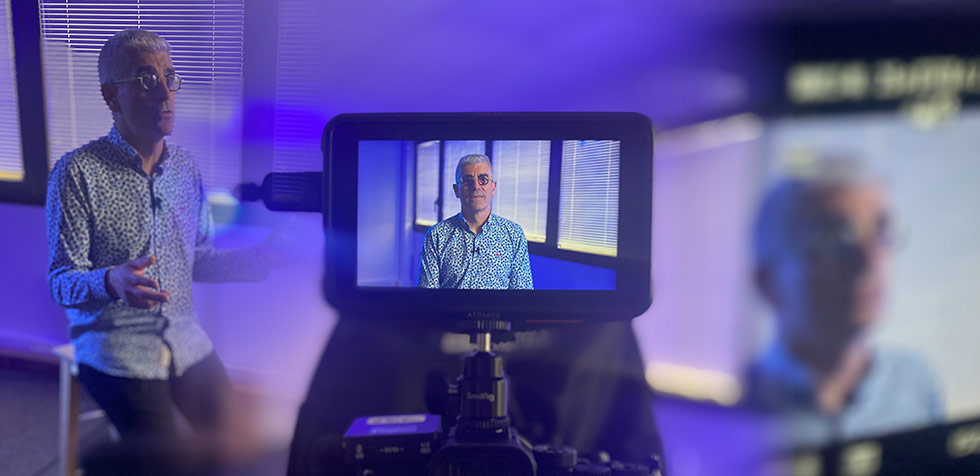Q What is the current state of broadcast operations
in the context of internet-based video distribution technologies?
Eric Deniau: The broadcast sector is an industry in transition. They not only face competition from other broadcasters but also increasing competition from streaming providers with lower operational costs – and simpler distribution mechanisms – through internet protocol-based infrastructure.
It is an important context because broadcasters operate in a very fragmented environment. Some have fully embraced emerging technologies – such as advanced compression standards, analytics, and automated workflows, but that’s not a majority.
Eric Deniau, SVP of R&D at VITEC, discusses how emerging technologies in IP video – including AI – alter content development and critical investments to make in talent, technology and tactics and how these changes impact adapting to an increasingly competitive business landscape in the broadcast sector.
The implications are significant. Integrating new workflows over years of legacy practices has ripple effects that impact the very foundations of established industry practices.
Q What are the emerging technologies that
are challenging legacy operations?
Deniau: Several technological developments over the past half-decade have led to an increased application and viability of high-quality internet protocol production and distribution processes.
Moreover, advanced compression standards have continued to create gains of about 50% in asset file-size efficiency every 7 years. This combined with increased internal network capacity – with 10-gigabit networks now becoming the market standard – is democratizing the distribution of compressed and uncompressed video feeds in large organizations across the board. This is good news for broadcasters, but it also reduces the barriers to entry for over-the-top providers.

Advances in low latency encoding/decoding and efficient routing algorithms have reduced screen-to-screen latency to the frame level – even over standard IP networks.
We have also seen the emergence of new protocols that allow the delivery of full broadcast-compatible data over IP networks (such as SMPTE2110). These further increase integration of production workflows with distribution mechanisms. By leveraging the same network for full broadcast-quality video with compressed low-resolution proxies for streamlined production operations, broadcasters have an opportunity to remove costs while accelerating time-to-value.
Finally, the digital nature of video over IP makes it prime content to be processed with artificial intelligence-powered algorithms, such as pattern matching. When AI is combined with metadata, it creates powerful management tools for storage, retrieval, editing, mixing, and all sorts of computer-based processing.

Advanced management software executed on edge devices offers additional opportunities to introduce more efficient processes across the production and distribution lifecycle. It is prompting leaders to revisit video, audio, caption, geo-localization, and time code workflows.
This has laid the groundwork for the democratization and specialization of broadcast production where production managers will be able to achieve higher levels of output with lower efforts, while also developing more targeted content.
In other words, it is not enough to simply apply the technologies. Broadcasters must revisit their processes to ensure optimal efficiency from a technical and financial perspective.
Q What investments should production executives and IT leaders in the broadcast sector make to optimize this operational transition?
Deniau: Harnessing these new technology-enabled operations will require executives and IT leaders to adapt their current strategies.
The first thing they will need to ensure is that their corporate IT networks are upgraded or even re-designed to handle the volume and complexity of new video applications and traffic flowing over corporate infrastructures.
They will also need to decide on interface strategies for managing interactions between corporate and external distribution networks. This represents a large shift in conventional practices because broadcast facilities have traditionally been siloed from corporate infrastructure.

Broadcasters will have to ensure that new organizational competencies – supported by technical talent that understands the new converged environment – are in place for sustained, future-proof success.
Q How is VITEC supporting the broadcast sector?
Deniau: Everything we have discussed today has been about doing more with less. It has been about producing more content, more quickly, with fewer resources, without compromising the video quality consumers expect from broadcasters. These objectives are driving the digital transformation in the broadcast sector.
VITEC’s mission for the past 35 years has been to harness next-generation technologies that are robust, intelligent, and interoperable with other critical elements of broadcast operations.
Our mission is to develop tools and technologies that are easy to deploy and simple to use while offsetting the energy and carbon implications with technology that mitigates the environmental and business impact of there being more video captured, produced, and distributed than ever before.
Eurosport — VITEC Delivers Live, Low Latency Remote Commentary over the Internet for Broadcasters
Read more: https://www.vitec.com/success-stories/eurosport
NBC Universal Studios in New York’s Rockefeller Center deploys VITEC IPTV solution for in-house video delivery monitoring video services with far greater reach and flexibility than previous conventional cable TV system.
Read more: https://www.vitec.com/success-stories/nbc-universal-new-york-city
Feature Story News (FSN) — Feature Story News Streams Video of Historic U.S. Presidential Visit to Cuba Worldwide with VITEC IP Streaming Solution
Read more: https://www.vitec.com/success-stories/feature-story-news



